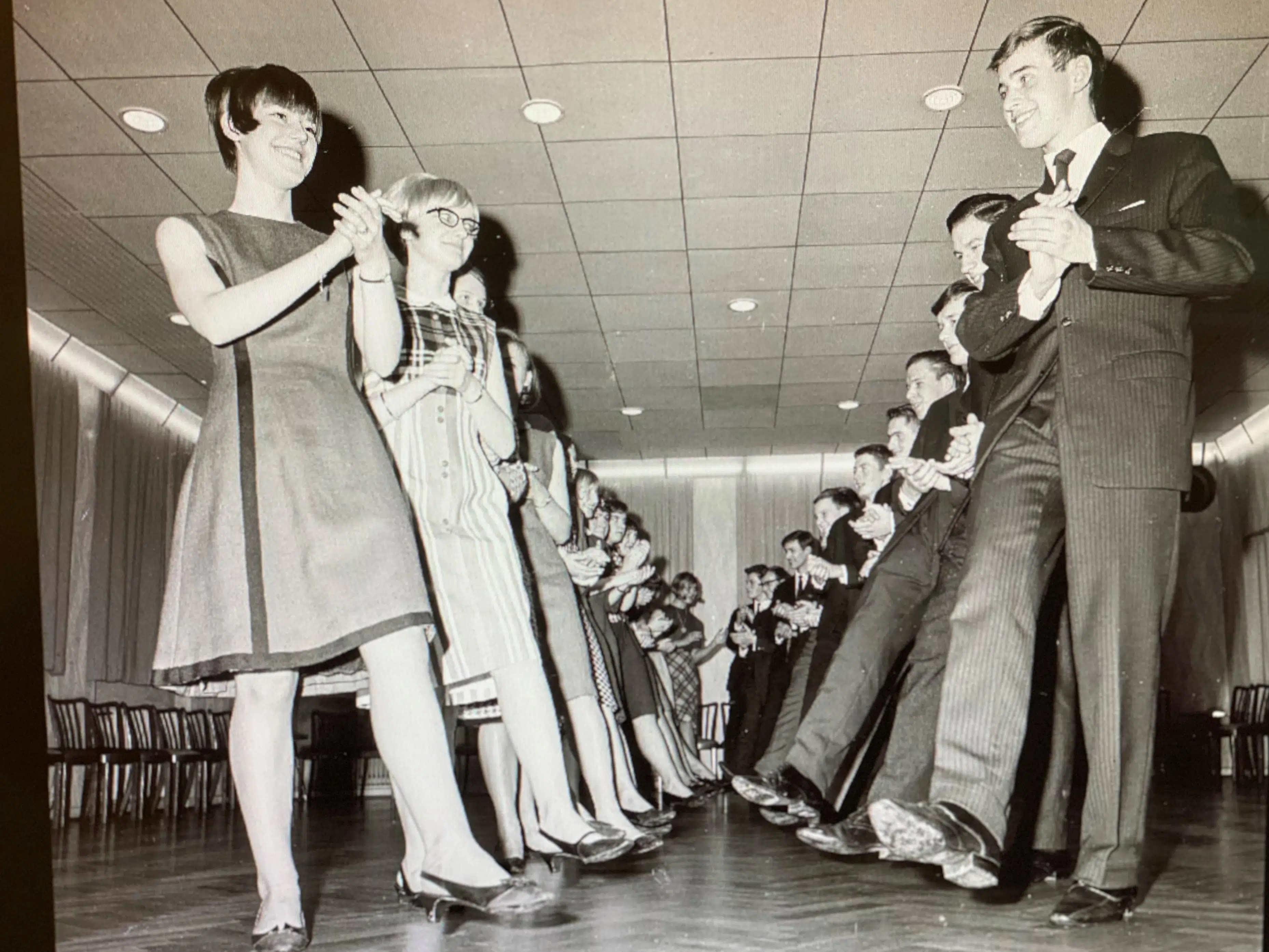The 1960s in photographs
from Hans Kripgans
“Do more of what you love” should be the motto for every single day of life, not just a New Year’s resolution. I’m fascinated by history and especially contemporary visual history and the works of Berenice Abbot, Brassaï, Doisneau, August Sander or Steve McCurry. Photographs capture significant and highly complex historical developments or even single moments in a single enduring motif. My passion is everyday photography. So what could be more natural than a visit to the Willy Brandt House in Lübeck, one of my favorite cultural institutions in Lübeck. The photo exhibition “Lübeck on the Move – The 1960s” is open until March 13. It presents photographs of the well-known photographer Hans Kripgans, who was the chief photographer and “The Eye” of the Lübecker Nachrichten until 1975.
The power of images
On the move! A visual journey into history, yet so much more than a mere retrospective. In this case, I’m paying a visit to my own childhood and looking back to the heady years of the economic miracle when my parents were young. The scenes from the everyday life of the people of Lübeck show which topics moved the society of the Federal Republic of Germany in those years. Some are still relevant today and just because the pictures are black and white, life was by no means.

Don’t trust anyone over 30: Children & Youth
This contrast between “young” and “old” has existed for centuries. Already around 2,000 B.C. a cuneiform text said: “Our youth is run down and unprotected. Young people no longer listen to their parents. The end of the world is near. The 1960s were no exception. Society was undergoing rapid cultural change, which created tensions between generations. A change in sexual morals and the communication medium of television, which was available to a wider mass of people, accelerated this transformation. With the Beatles and the Stones, a new formative attitude to life also came to Lübeck. Fashion was a visual counter-design to the stuffy bourgeoisie: short skirts, little hanging dresses, leather jackets, bell-bottoms. Bold designs in patent, velvet and corduroy. (Um: isn’t this just mega topical again: everything is coming back..) Parents feared their sons and daughters might end up as “deadbeats” or “rockers.” Just imagine: Young people met just like that to “chill” on the lawn in front of the Holstentor.

“Rocker” in Hüxstraße, 1969, (c) Lübecker Nachrichten / Hans Kripgans 
The 3 DJs Helmut, Phil and Snoopy, 1968, (c) Lübecker Nachrichten / Hans Kripgans 
“Tramps” at the Holstentor, 1966, (c) Lübecker Nachrichten / Hans Kripgans 
After school, 1967, (c) Lübecker Nachrichten / Hans Kripgans
The mustiness under the gowns: protests & demonstRAtions
The 1960s were a decade of upheaval for many reasons. I wonder: have there ever been decades without upheaval? The building of the Berlin Wall on August 13, 1961, definitely had a formative influence on Germany and Europe, and indeed on the balance of power throughout the world in the decades that followed. The effects are still being felt today. The Easter marches have their beginning in the 1960s. In Lübeck, too, citizens of all generations were active against nuclear power and nuclear weapons. People’s fear was further fueled by the Cuban Missile Crisis and the East-West conflict. The Shah’s visit and the death of Benno Ohnesorge, the assassination of Rudi Dutschke and the emergency laws drove young people in particular onto the streets. Happenings and sit-ins for a revolution in society.

Protest against the State of Emergency Act, 1968, (c) Lübecker Nachrichten / Hans Kripgans 
Dutschke demonstration, 1968, (c) Lübecker Nachrichten / Hans Kripgans 
Easter march, 1964, (c) Lübecker Nachrichten / Hans Kripgans
Shop`til you drop: Transport & Shopping
The face of Lübeck changed. Cars, cars everywhere! New and, above all, wider streets, parking lots and parking garages were built. Bridges were built. Among them was the folding bridge Herrenbrücke, which in the memory of all contemporaries was folded up just when one urgently wanted to cross it. Incidentally, this was also a popular excuse in cases of unpunctuality. Currently, we are concerned with reorganizing our mobility in Lübeck under the leitmotif “Lübeck the day after tomorrow“. To develop alternative and sustainable transportation options to protect the environment and enhance the quality of life.

Lübeck’s Old Town with its new large stores such as Karstadt, Kepa, Haerder, Anni Friede and C&A with their wide range of products and generous sales areas developed as an attractive destination. With rising incomes, luxury goods were also affordable for many German citizens. Shop windows were opulently designed. People dressed up when they went into town and always combined shopping with a visit to a café. Ladies, of course, kept their hats on there.

Kepa department store Holstenstraße, 1963, (c) Lübecker Nachrichten / Hans Kripgans 
Crossing Breite Straße – Dr. Julius-Leber Straße, 1962, (c) Lübecker Nachrichten / Hans Kripgans 
C&A building Mühlenstraße, 1967, (c) Lübecker Nachrichten / Hans Kripgans 
Schrangen, 1965, (c) Lübecker Nachrichten / Hans Kripgans
A story can be told about each motif. There is not enough space here. Other exhibition areas are devoted to the topics of “Building & Living” and the person of Willy Brandt, who remained loyal to his native city throughout his life, regularly visited his mother Martha Kuhlmann, who lived here, and his stepfather, met political companions here and appeared in Lübeck at the end of the election campaigns in 1961, 1965 and 1969. The permanent exhibition at the Willy Brandt House in Lübeck is dedicated to the life and work of Willy Brandt. Admission is free of charge.
In any case, it becomes clear once again in the Kripgans exhibition that people have ALWAYS been and are facing the future. Each individual is part of this long and exciting story and connected to the people of the past and the future.
